

| The use of the site and the building history of this important palace is complicated. In the 5th century CE, a Christian basilica occupied a part of the site. In the early 8th century the Arabs conquered the Spanish peninsula and the town of Seville grew, eventually becoming the Islamic capital. The first important Moorish building efforts occurred in the 10th century but little remains of these structures since various enlargements and alterations occurred in the 11th century, the 12th and the early 13th century (especially during the reign of the Almohad government--1147-1237). As Barrucand and Bednorz state, "The 'Abbadîd palace of al-Mu'tamid and later the Almohad palace of Abû Ya'qûb occupied more or less the same site as the subsequent Alcazár of Pedro the Cruel, which without doubt took over many features from the earlier structures" (154). In 1248 Fernando II conquered Seville so from then the Alcázar became the residence of the kings of Castille and of necessity was altered to adapt these Islamic buildings to courtly needs. In the middle of the 13th century Alfonso the Wise rebuilt part of the old Almohad palace in a simpler fashion using the Gothic style. Today this complex consists of the so-called Halls of Carlos V. Later Spanish kings continued the rebuilding efforts in an architectural style combining Christian and Islamic designs. The middle of the 14th century marks the beginning of residential Mudéjar architecture in Seville. Most notable is Don Pedro's Palace, begun in 1364, using Christian and Moslem builders from Toledo and Granada. | ||
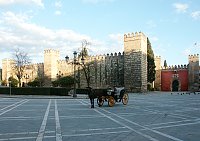
|
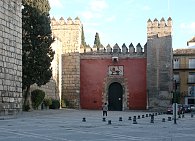
|
Left: Wall of the Dar-al-Imara (913-14); center: Puerto del Léon |
Today's entrance, once known as the Puerta de la Montería (Gate of the Hunt)The entrance used today takes its name from the ceramic tile panel above the portal with a heraldic rampant lion holding a cross. The Latin inscription reads "Ad Utrumque" ("Prepared for All"). Defensive machicolations line the wall and towers. |
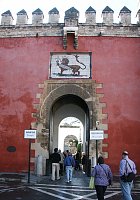
|
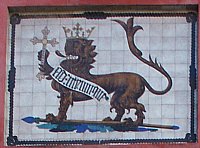
|
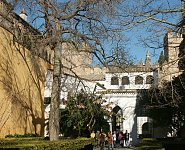
|
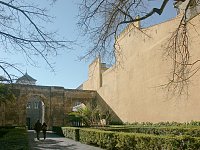
|
Patio del LéonThis patio is separated from the one behind it, the Patio de la Montería, by a large wall with three arches. In the plan of Islamic palaces this patio would have been the Mexuar, the space between the street and the private residential area. |
Patio de la Montería with the facade of King Don Pedro's Palace (left and center); right: looking back toward the wall dividing this patio from the Patio del LéonThis patio, or the Courtyard of the Hunt, derived its name from the scouts (monteros), who accompanied the king in his hunting parties. | ||
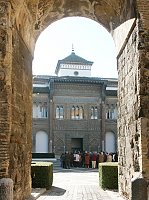
|
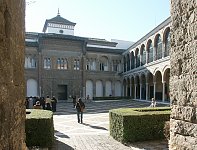
|
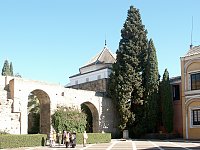
|
The three sides of the Patio de la Montería"On the right hand side, before the Admiral's Suite, there is a passage or gallery the design of which is ascribed to Antón Sánchez Hurtado (1584-1588), a former Maestro Mayor of the Alcázar. . . . [It] consists of two sections, each with semi-circular plain brick arches, resting on Ionic marble columns above and on Tuscan columns below. The ceilings of both galleries are ascribed to Martín Infante. The upper gallery was glassed in modern times" (Fidalgo 20). | ||
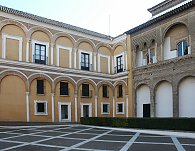
|
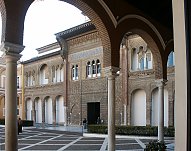
|
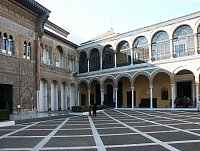
|
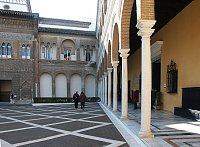
|
Looking from the right hand side of the Patio de la Montería--the west Gallery |
|
Works Cited:
Marianne Barrucand and Achim Bednorz. Moorish Architecture. Cologne: Taschen, 2002.
Ana Marin Fidalgo. El Alcazar Seville. Spain: Guadalquivir, 1992 [official guidebook]
 Click here to return to index of art historical sites.
Click here to return to index of art historical sites.
 Click here to return to index of artists and architects.
Click here to return to index of artists and architects.
 Click here to return to chronological index.
Click here to return to chronological index.
 Click here to see the home page of Bluffton University.
Click here to see the home page of Bluffton University.
